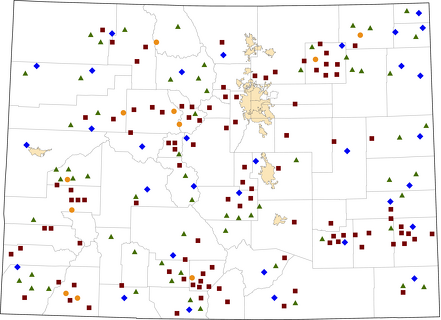Colorado
State Office of Rural Health
Phone: 303.832.7493
Email: info@coruralhealth.org
view details
Colorado Nonmetro Population
5,810,774
Estimated population
714,276
(12.3%)
People living in nonmetro areas
Colorado Rural Healthcare Facilities
32
Critical Access Hospitals
0
Rural Emergency Hospitals
63
Rural Health Clinics
102
Federally Qualified Health Centers*
11
Short Term/PPS Hospitals*
*Sites according to data.HRSA.gov (July 2025), showing only locations outside of
U.S. Census
Bureau Urban Areas with a population of 50,000 or more
Last Updated: 9/11/2025
Last Reviewed: 11/16/2023



Selected Social Determinants of Health for Rural Colorado